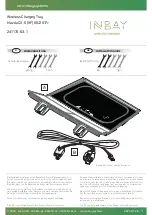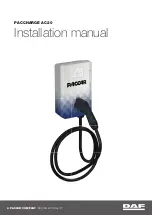
M
o
bi
lity
219
Refere
nce
At a glan
ce
Co
n
tr
o
ls
Dr
ivi
n
g ti
ps
Co
mm
un
icat
io
ns
Navigation
Ente
rt
ai
nme
n
t
heat when tested under controlled conditions
on a specified indoor laboratory test wheel.
Sustained high temperature can cause the
material of the tire to degenerate and reduce
tire life, and excessive temperature can lead to
sudden tire failure. The grade C corresponds to
a level of performance which all passenger car
tires must meet under the Federal Motor Vehi-
cle Safety Standard No. 109. Grades B and A
represent higher levels of performance on the
laboratory test wheel than the minimum
required by law.
The temperature grade for this tire is
established for a tire that is properly
inflated and not overloaded. Excessive speed,
underinflation, or excessive loading, either sep-
arately or in combination, can cause heat
buildup and possible tire failure.
<
RSC – run-flat tires
You will recognize run-flat tires by a circular
symbol containing the letters RSC on the side
of the tire, refer to page
220
.
M+S
Winter and all-season tires.
These have better winter properties than sum-
mer tires.
XL
Designation for specially reinforced tires.
Tire condition
Inspect your tires frequently for tread wear,
signs of damage and for foreign objects lodged
in the tread. Check the tread depth.
Minimum tread depth
The tread depth should not drop below 0.12 in/
3 mm, although, for example, European legisla-
tion only specifies a minimum tread depth of
0.063 in/1.6 mm. At tread depths below 0.12 in/
3 mm there is an increased risk of high-speed
hydroplaning, even when only small amounts of
water are present on the road surface.
When winter tires wear down past a tread depth
of 0.16 in/4 mm, they become perceptibly less
suitable for winter conditions. In the interest of
safety, new tires should be installed.
Wear indicators in the base of the tread groove
are distributed around the tire's circumference;
the letters TWI, for Tread Wear Indicator, on the
tire's sidewalls identify tires that incorporate
these wear indicators. Once the tire tread has
worn down to the wear indicators, the tire has
worn to a depth of 0.063 in/1.6 mm.
Wheel/tire damage
Please note that low-profile tires cause wheels,
tires and suspension parts to be more suscep-
tible to road hazard and consequential dam-
ages.
Unusual vibrations encountered during normal
vehicle operation can indicate tire failure or
some other vehicle defect. This can, for exam-
ple, be caused by driving over curbs. The same
applies to any other abnormal road behavior,
such as pulling severely to the right or left.
In these cases, reduce speed immedi-
ately and have wheels and tires thor-
oughly checked. To do so, drive carefully to the
nearest BMW center or tire shop that works
according to BMW repair procedures with cor-
respondingly trained personnel. If necessary,
have the vehicle towed there.
Otherwise, tire damage can pose a lethal hazard
to vehicle occupants and other road users.
<
Содержание 328 xDrive
Страница 1: ...The Ultimate Driving Machine Owner s Manual for Vehicle...
Страница 2: ......
Страница 10: ......
Страница 16: ...Cockpit 14 Around the center console controls and displays...
Страница 26: ......
Страница 126: ......
Страница 134: ......
Страница 154: ......
Страница 183: ...Navigation Entertainment Driving tips 181 Reference At a glance Controls Communications Mobility...
Страница 184: ......
Страница 185: ...Communications This chapter describes how to use the telephone BMW Assist and TeleService Communications...
Страница 205: ...203 Entertainment Reference At a glance Controls Driving tips Communications Navigation Mobility...
Страница 206: ......
Страница 246: ......
Страница 259: ...Reference 257 At a glance Controls Driving tips Communications Navigation Entertainment Mobility...
Страница 276: ......
Страница 277: ......
Страница 278: ...01 41 2 604 638 Ue iDrive BL2604638007 The Ultimate Driving Machine More about BMW bmwusa com...
















































